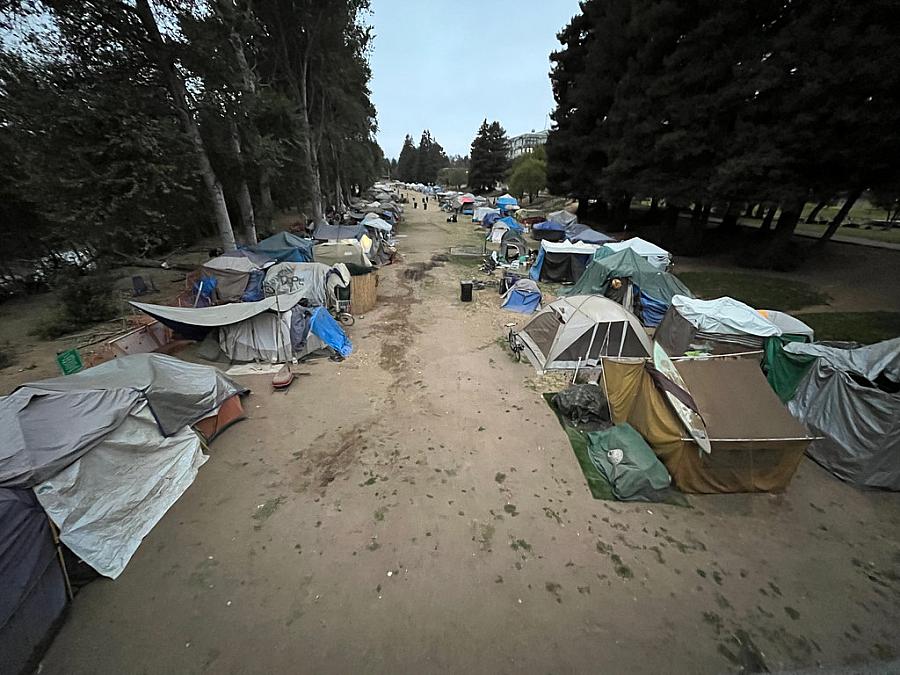Might better data help us break the cycle of homelessness and trauma in Central California?

A homeless encampment.
Photo by Travis Wise
Nearly half of surveyed homeless people in San Luis Obispo County report suffering from post-traumatic stress disorder (PTSD), according to a 2022 Point in Time report, also known as a PIT Count.
This finding points to a distressing pattern that extends far beyond our local community and across the state of California — a cycle of trauma and homelessness persists.
A 2023 UCSF statewide study painted an equally troubling picture. It found that two-thirds of surveyed homeless individuals reported symptoms of mental health issues, while more than a third had experienced physical or sexual violence during their episodes of homelessness.
“Participants had experienced multiple forms of trauma throughout their life, increasing their vulnerability to homelessness and contributing to their mental health and substance use challenges,” the press release on the UCSF study stated.
In these findings, a glaring gap in the support system becomes apparent: only 18% of these individuals reported receiving mental health care.
What obstacles are hindering numerous homeless individuals with PTSD and other mental health conditions in the state from accessing the vital support they need?
A finding from the SLO PIT Count adds another layer of complexity to the problem: a pattern of recurring homelessness, with 68% of respondents reported having experienced multiple episodes of homelessness. This led me to wonder, what causes recurring homelessness, and could limited access to mental health treatments play a role?
To address these questions, my 2023 Data Fellowship project will involve analyzing data from point-in-time reports. These reports provide a snapshot of the homeless population in a specific geographic area at a single point in time.
I will also utilize Homeless Management Information System (HMIS) data, which tracks outcomes related to homeless populations, including demographic information, housing history, and service utilization, among other relevant details.
With these rich data sources at my disposal, I aim to delve into the characteristics and demographics of the 18% of homeless individuals who do receive mental health care.
My project will closely examine their service utilization patterns, and the specific types of mental health services they access. My goal is to identify potential factors contributing to their ability to access mental health care services.
I will also look at the efforts of local nonprofit organizations like the 5Cities Homeless Coalition and Community Action Partnership of San Luis Obispo. I will analyze the data these organizations have collected to assess the effectiveness of their services in reducing recurring homelessness.
Most importantly, data is more than just numbers — these are real people with stories. I'm eager to bring these experiences to the forefront by conducting interviews with local homeless advocacy groups, mental health professionals and individuals experiencing homelessness with PTSD. I hope this will bring firsthand insights into the challenges they face.
While research on homelessness often focuses on socioeconomic factors, my goal is to provide a fresh perspective by delving deeper into the cycle of homelessness and its connection to trauma. I hope to uncover insights that can help policymakers make more informed decisions on resource allocation, mental health support, and homelessness prevention strategies.
